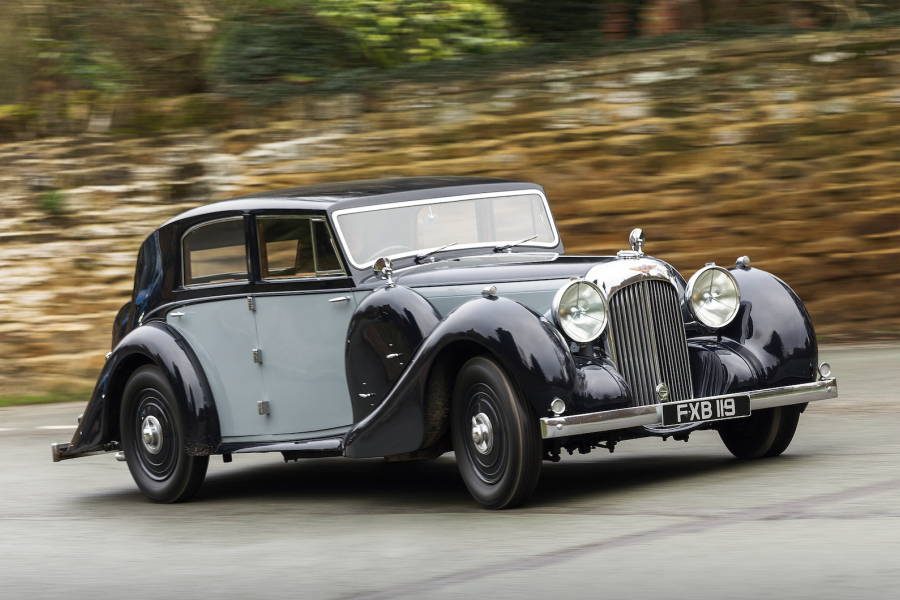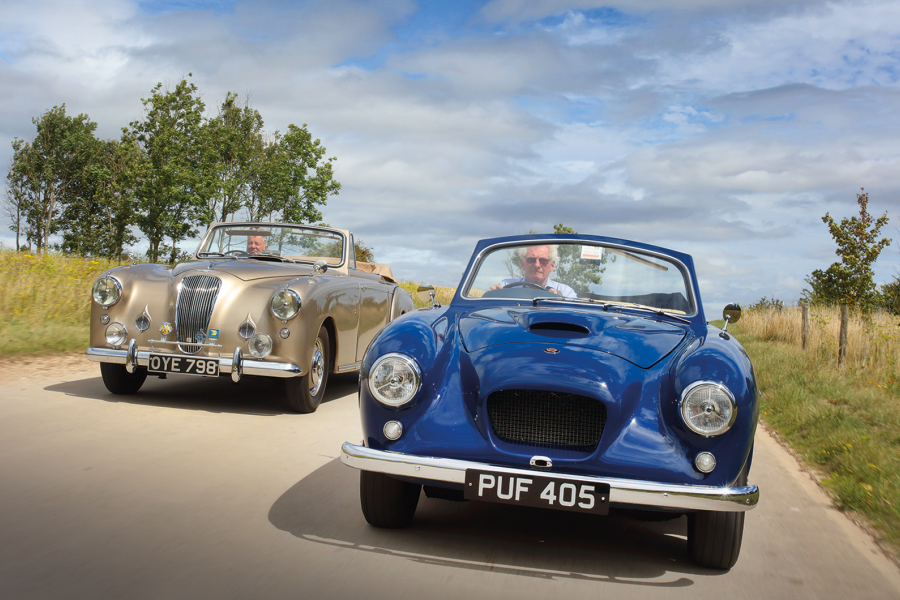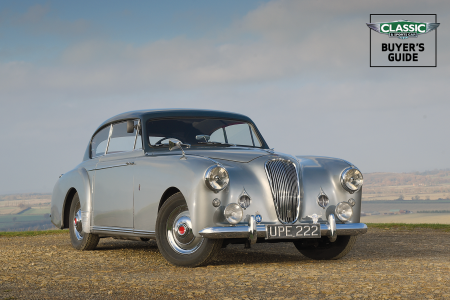“We restored the original walnut veneer,” recalls Clark, “but he thought that it didn’t suit the Lagonda and chose a piano black finish that gave the interior added style. The seats were retrimmed by us in dark olive Vaumol leather.”
Clark adds: “The Sanction 2 engine already had the Le Mans carburetion set-up done by the factory, although we changed the firing order just as Lagonda did on later V12s in period for smoother running.
“We also added authentic shrouds around the exhaust manifolds to reduce under-bonnet heat exactly as WO had done.
“The hydraulic brakes were rebuilt and all of the springs were reset so that the car sat perfectly. The carburettors and the linkage were carefully overhauled with new bushes, which transformed the engine’s response.
“The one-shot lubrication and the hydraulic jacking installation were all re-piped, and it will now lift up any corner.
“The final touch was a set of Michelin racing tyres that really sorted its handling. The result was the best performing Rapide I’ve driven, with a comfortable 100mph cruising speed.
“Bentley’s separate G10 gearbox is superb and, with synchromesh, it feels just like a modern car to change.”
The Lagonda’s fold-flat windscreen gives the magnificent styling a streamlined stance
The finished Rapide is a remarkable tribute to the gifted team – engineers and fabricators – who created this English exotic in such a short time.
Maybe one day the brilliant but unsung Frank Feeley will be celebrated at a premier concours, with the V12 Rapide centre stage among his fine work for Lagonda and Aston Martin.
Little wonder its flowing lines and advanced specification tempted orders from such stylish men as American Briggs Cunningham, who rated it WO Bentley’s masterpiece.
The dashing playboy sportsman borrowed a V12 from the factory to tour the UK in 1939, and was so impressed that he ordered a drophead with a special Le Mans-tune engine at great expense, and kept it until his death in 2003.
For the man who could afford any car he wanted, that loyalty to the Lagonda says everything.
Images: James Mann
Thanks to Lord Bamford; Clark & Carter; Peter Bradfield
This was first in our September 2017 magazine; all information was correct at the date of original publication
Factfile
Lagonda V12 Rapide
- Sold/number built 1938-’40/17
- Construction ladder chassis, ash frame, aluminium body; DWS hydraulic jacking system and Tecalemit automatic lubrication
- Engine nickel-iron crankcase and cylinder heads, sohc-per-bank 4480cc 60º V12, camshafts driven via gears and two short chains, twin downdraught SU carbs (four on Sanction 2 Le Mans spec), twin coil ignition
- Max power 180bhp @ 5500rpm
- Transmission Lagonda G10 four-speed manual, with synchro on top three, RWD
- Suspension: front independent, by double wishbones, torsion bars rear live axle, semi-elliptic leaf springs; Armstrong lever-arm shock absorbers f/r
- Steering Marles worm and roller
- Brakes Lockheed hydraulic drums
- Tyres 6.50 x 18in
- Wheelbase 10ft 4in (3150mm)
- Track 5ft (1524mm)
- Weight 3704lb (1680kg)
- 0-60mph 4.7 secs
- Top speed 110mph (116mph Sanction 2)
- Price new £1600
- Price now £1.2-1.5million*
*Prices correct at date of original publication
READ MORE
From the past with presence: Bristol 405 vs Lagonda 3 Litre
On track in the unique DB created to win at Le Mans
Chrysler Imperial: the great impression
Mick Walsh
Mick Walsh is Classic & Sports Car’s International Editor

















